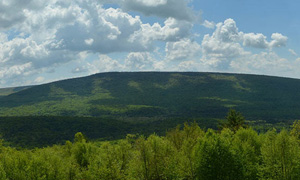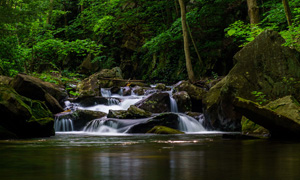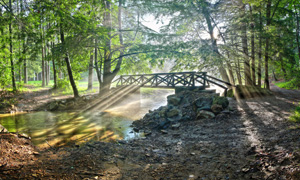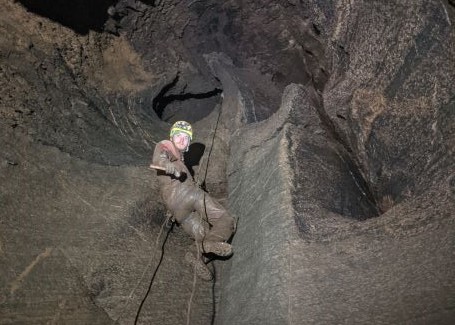
Celebrate Cave Week 2024
June 2-8, 2024
(Celebrated annually during the first week in June)
What is Cave Week?
Cave Week is a time to celebrate caves. This year marks the 7th anniversary of Cave Week – a week dedicated to increasing awareness about caves and karst, their importance, geology, history, biology, exploration, and current research.
Pennsylvania Caves
Cave Formation
Pennsylvania is home to hundreds of caves. Most are short muddy crawlways, but others contain miles of passage or cathedral-size rooms with beautiful formations.
Pennsylvania caves form by two methods: dissolution and gravity. Dissolution caves are the most common type of cave in Pennsylvania. They form as soluble bedrock (i.e. limestone, dolostone, and marble) is dissolved by water over many millennia. Gravity caves, often referred to as Tectonic caves, form when fractured bedrock near Earth’s surface is pulled apart by gravitational forces. As a result, Tectonic caves are most often found on the edge of a steep slope. Wind Cave in Lancaster County is such a cave.
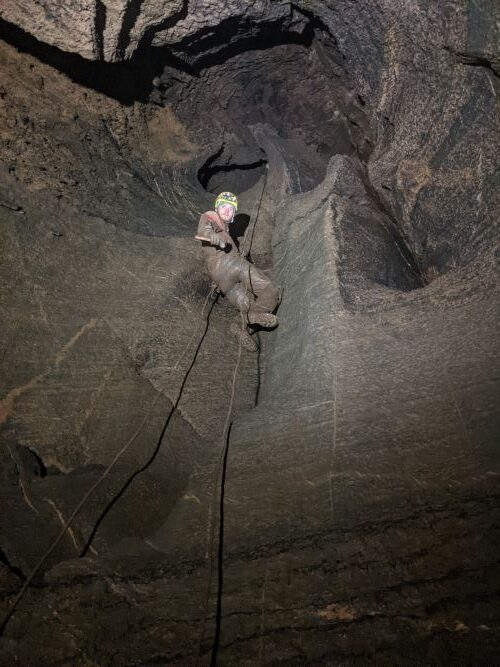
Kooken Cave is a private cave in Huntingdon County. It is the longest and deepest cave in the county with over 9,400 feet of mapped passage, and 239 feet of relief. This drop is 40 feet tall. / Photo by Derek Von Nieda
Caves as Habitats
Caves form unique habitats with unique occupants. We are most familiar with the trogloxenes, or “cave guests” who use caves part time. Think of bats roosting, bears hibernating, or cave swallows nesting! Troglophiles, meaning “cave lover” can live outside of the cave habitat. They can live their entire life inside or out and include cave crickets or long-tailed salamanders. Troglobites have fully adapted to cave life, often losing pigments, use of eyes, and with a slower metabolism. The Pennsylvania grotto sculpin is a cave fish with some of these adaptations and Stellmack’s Cave Amphipod is an invertebrate, found in three cave systems in Pennsylvania, that has adapted to cave life. Life in caves cannot rely on photosynthesis for the base of the food chain, so cave life takes advantage of nutrients that wash in or are delivered by visiting species such as bats. Others make their own energy by chemical reactions!
Caves as Time Capsules
Caves also act as time capsules! Human history is preserved in Pennsylvania caves through objects left behind, or historical signatures scrawled on cave walls. Fossils found in caves maintain a record of past plants and animals. For example, the Port Kennedy Bone Cave contained fossils from 750,000 years ago to the Ice Age ~24,000 years ago to today, including extinct saber tooth tigers, mastodons, and giant sloths. Caves can even tell us about past climates. Sediment washed into caves preserves a record of the climate on the land surface, and the chemical composition of individual growth rings in cave formations records the rainfall of the past.
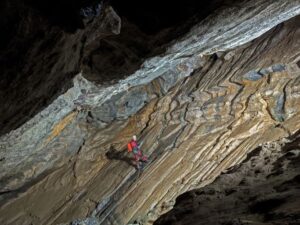
Preferential dissolution has taken place along tilted limestone beds in the first room of Kooken Cave. / Photo by Derek Von Nieda.
Ways to Learn and Participate in Cave Week
There are many ways to participate in Cave Week in Pennsylvania. First, you can visit one of the State’s eight commercial caves where marked trails and a guide will lead you through the amazing underground world. Up for more adventure? Look for your local caving group, called Grottos, here and join them to explore wild caves. If going underground is not your thing, you can visit Lincoln Caverns virtually! Other fun ways to participate topside include watching a movie or reading a book on caves or caving. You could dress-up like a caver, cave scientist, or cave animal. Or even channel your inner bat and enjoy a snack of bat-dependent food such as agave, bananas, avocados, coconuts, figs, mangos, and almonds! Recipe ideas at Cookbook – Bat Week, yum!
Written By: Rose-Anna Behr, Senior Geoscientist, Pennsylvania Geological Survey, Department of Conservation and Natural Resources


